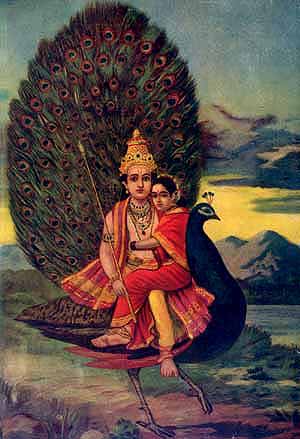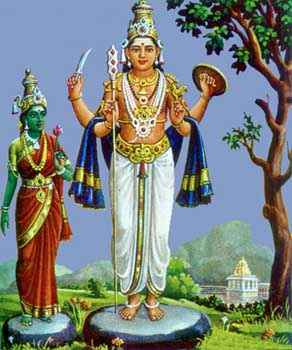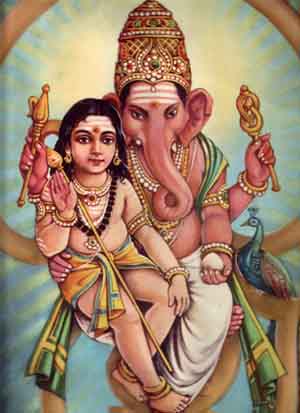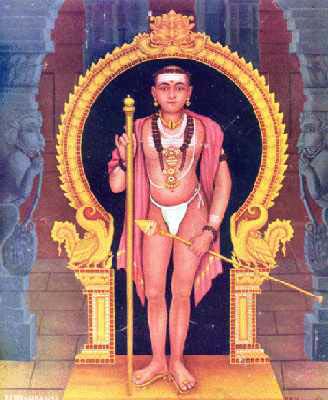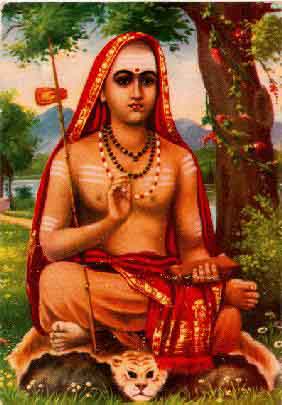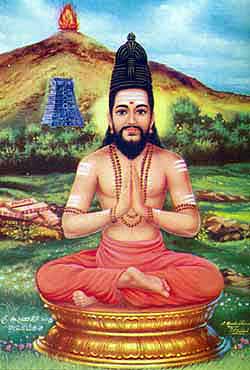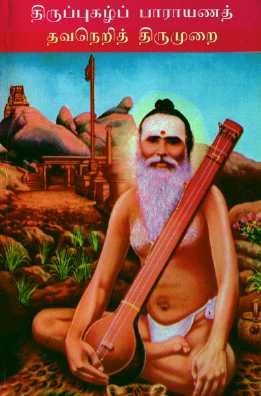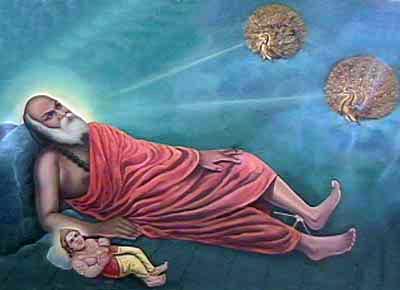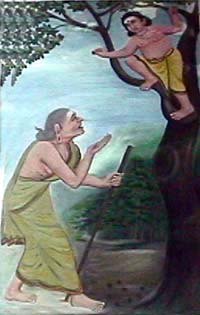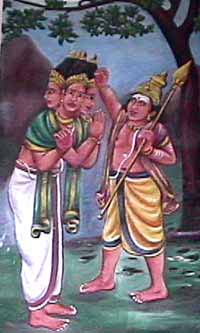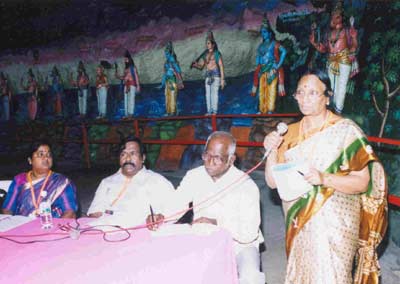
|
||||||||||||||||||
|
| ||||||||||||||||||
Facets of Murukanby Prof. Dr. Mrs. V. BalambalThis paper was originally presented at the Second International Conference on Skanda-Murukan, Mauritius, April 2001.Hindu pantheon is filled with innumerable gods and goddesses, including principal deities and sub-deities. The main deities are Siva, Sakti, Vishnu, Lakshmi, Saraswati, Ganapati and Skanda (Murukan). Folk deities like Ayyanar, Mari Amman, Munisvaran, and Madurai Viran are worshipped mainly in villages. Among these, Murukan is considered to be the favorite god of the Tamils and he is also known as Tamizh Katavul. The early culture is tribal in character and the Tamil country was divided into five major geographical divisions such as Kurinci, Mullai, Marutam, Neytal and Palai. Kurinci consists of hilly tracts and Murukan is worshipped as the god of Kurinci. He was known as Ceyon or Korravaichelvan in Cankam literature. This tribal god turned to be a popular god not only in Tamilnadu but in all other parts of India with Sanskrit names such as Kārttikeya, Skanda, Subrahmanya, etc. It has become a common practice to have his abodes in hills as he is accepted as the god of hilly regions. To a devotee, Murukan is a great god, but to a researcher, he is more than that. An in-depth study of the available sources prove that Murukan is unique because he has multiple facets. This paper is a humble attempt to reveal that He is the:
The sources are primary and secondary in character. Published works and articles in various journals form the secondary sources. Various Cankam literature such as Tirumurukarruppadai, Paripatal, Kuruntokai and Cilappatikaram, Tirumantiram, Tiruppukal, Kanda Sasti Kavacam, Kandarankaram, Kandaranuputi, Kandarantati, Shanmukakavacam, Muttukumarasamipillaitamizh, Śrī Subrahmanya Bhujankam, Tanikaipuranam, and Kumara Sambhavam various sthalapuranas of Murukan temples and many other works form the primary sources. The Arupadai Vitu and other abodes of Murukan also are useful to the study. Worthy son of SivaAll puranas and works referring to Murukan authentically state that Siva and Muruka are one and the same. The light of Siva in the form of six circles gave way to six-faced Murukan also known as Kanda. He and Siva are one and the same. (Tirumantiram: Enthaipiranukku Irumunru Vattamai) Siva has six faces and as Kanda also has six, both are same, though they are named differently (Tirumantiram Arumukathil Atipati) Lord Siva created Murukan at the request of the devas who were tortured by Surapadma and the asuras. It is quite interesting to note that from his own six third eyes Siva brought out six fire sparks which were handed over to god Vayu who in turn gave to Agni who deposited the same in Ganges, who in turn took the fire to the Saravana tank near Himalayas. The six fire sparks became six babies taken care by six Krittikai maidens. Siva and Parvati reached the tank and the six babies taken in one embrace by Sakti became Arumuka (six faced) with six heads twelve eyes and hands and one body. He became the worthy son of Siva by defeating the asuras, gracing the devotees, and becoming very knowledgeable. All the five natural elements are associated with the birth of Murukan. Siva himself is the controller of all the five elements. 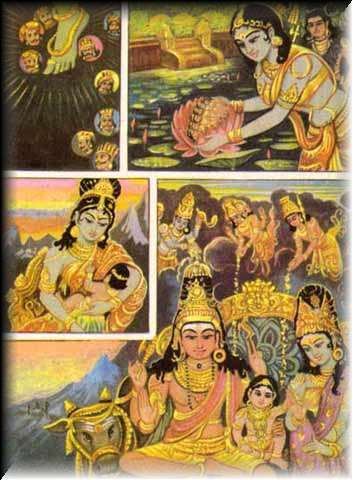
Favorite son of SaktiSakti also known as Parvati, Uma, Korravai, etc is a powerful goddess. She is said to be the greatest creator and she is very righteous and even fought with Siva to uphold justice. Her cosmic dance with Siva gives answer to various questions of philosophers and sages. Sakti gave her powerful spear to Skanda when he started his expedition against Surapadma, a powerful Asura king. To subdue him, Murukan had to use the Saktivel which parted the mango tree into peacock and cock. In Cankam literature, Murukan is referred to as Ceyon ('red one' or 'bright one') and Korravai Celvan (son of Korravai). Even puranas state Sakti's love for Skanda and her concern to pacify him when he lost the mango to his brother and left for Palani in anger. Foster son of Krittikai maidensLord Siva, knowing the avatar tattva, created Arumuka who was left with the six Krittikai maidens at the command of Tirumal, the elder brother of Sakti. Kanta Puranam and other literary works give a detailed account of the way in which the foster mothers took the utmost care of the six children. Muruka got his name Kārttikeya for the simple reason that he was fostered by six divine Krittikā nymphs. The month of Karttikai (Nov–Dec) is associated with Muruka and every month there are special pujas in Murukan temples on the day of Karttikai star. Affectionate younger brother of GanesaLord Vignesvara also known as Ganesa or Ganapati is the elephant headed god and elder brother of Murukan. Though there is reference to the competition between two brothers to possess the mango given by Narada, it is well known that only with the help of Ganesa, Muruka was able to win over Valli and married her at Tiruttani. This episode clearly proves the power of Vignesvara whose grace is very essential to start and finish any action successfully without any obstacle. All obstacles will be cleared if the devotees pray to him sincerely. Though Murukan himself is omnipotent, he needed the assistance of Ganesa, who fulfilled the desire of his beloved brother. Commander in chief of the army of the devas and destroyer of asurasThe purpose of the birth of Lord Muruka was to end the domination of Surapadman who imprisoned even Indra's son Jayanta and other devas and ill treated them. Surapadma's brothers Taraka and Singhamukhan, and sister Ajamukhi also ill treated the devas. As he was born out of the third eye of Siva and was gifted with Saktivel from Parvati, Murukan became the fitting commander of the forces of the devas. He was well assisted by Veerabahu and his eight brothers who were born to the Nava Saktis from the anklet of Sakti. One lakh of soldiers were also the outcome of the grace of the Nava saktis. With the blessings and grace of his parents, Murukan started his expedition against the asuras. The nine heroes and one lakh of soldiers accompanied Murukan to the battlefield. As he knew the codes to be followed in warfare, Muruka sent Veerabahu to Surupadma to release the devas, but Surapadma refused to do so and insulted Murukan so Veerabahu escaped from the place and reached Muruka and conveyed the information. Immediately Muruka started his campaign and had his first camp at modern Katirkāmam and proceeded to Tirucentur. The war continued for ten days and Suran followed various tactics; at last when he and his forces were defeated and he hid himself in the form of mango tree in the sea, Murukan used the Saktivel to part the tree into two which became a peacock and cock. The talented and the powerful commander was able to win over the asuras in a systematic way. In the Hindu pantheon, Muruka is associated with power, strength, victory and so on. The powerful Devasenapati destroyed the asuras with his might and redeemed the devas from the prison of Surapadma. 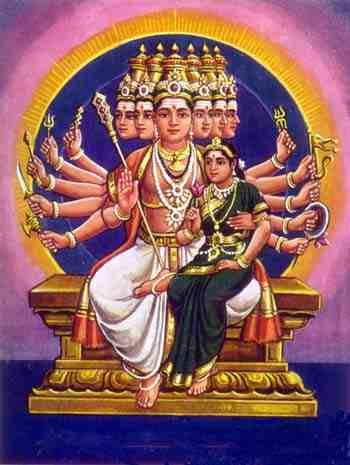
Husband of DevasenaSkanda, the great redeemer of the devas from the clutches of Surapadma was well rewarded. Kanda Puranam gives a vivid picture of the scene of marriage of Murukan and Devasena. Jayanta and other devas were released from imprisonment and resumed their original position. From Tirucentur where he completed Surasamhara, Murukan went to Tirupparankunram where Indra came with the Brahma, Vishnu and all devas and requested Murukan to marry Devasena. The auspicious time of marriage was fixed by Brahma and in the presence of his parents and all others, Skanda tied the sacred thread to Devasena. Skanda Purana gives a detailed account of the ritualistic marriage which is followed till the present day in Hindu Orthodox families and the practice of offering the daughter as a donation, to the groom by the parent. The marriage of Karttikeya with Devasena is an example of arranged marriage of royal and sophisticated style, while that with Valli denotes the significance of Kalavumanam or love marriage, inter-caste in nature. Both Murukan and Devasena are gifted Murukan is the powerful god of youth and beauty, destroyer and evil forces and savior of the devas; similarly Devasena is a well groomed, dignified, sophisticated, and obedient person with all high qualities. 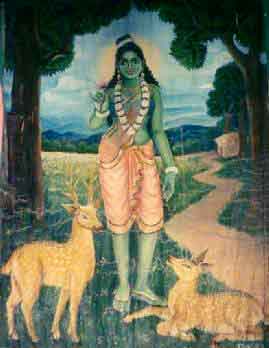
Beloved spouse of ValliThe greater commander in chief of the devas proved to be a different type of wooer to get the hand of Valli, the tribal beauty. His union with Valli shows that the omnipotent god does not have any caste or creed discrimination, and love only matters to him. Valli, brought up by the hunter king Nambi Rajan fascinated Murukan and to win over her, he came in the guise of a hunter (Vetan), tree (venkai) and old man (vrutan) and at last Velan. He was unable to win her hand until he realised that he failed to invoke Ganesa and get his blessings. His elder brother took the elephant form and made Valli accept Murukan. Though the family deity of the hunters was Murukan, they did not know that the lover of Valli was Velan and so attacked Karttikeya, who was able to win over them. The hunters realised their folly and offered Valli in marriage to Murukan. Tiruttani was the place of marriage. Murukan has Valli and Devasena on his right and left respectively. As his right eye in sun and left eye in moon, lotus in Valli's hand and lily in Devasena's left hand never wither. The union of Murukan with the two divine women stands testimony to Lord's acceptance of arranged and love marriages. All the poets and devotees make special mention about the influence of Valli on Murukan. 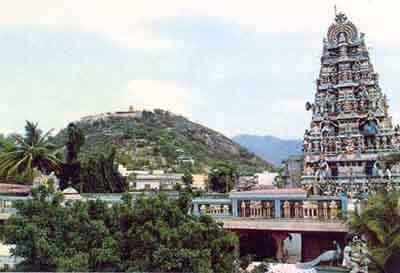
Lord of HillsMurukan is the god of the Kurinci region. In almost all the hillocks there are abodes of Murukan. Special mention is to be made about Arupadai Vitu – six famous abodes of Murukan - Tirupparankunram where he married Devasena; Tiruchchiralaivai where he won over Surapadma; Tiru Avinankudi, where he renounced and became Palani Andavar; Tiruverakam where he pronounced the meaning of Pranava mantra (Om) to his divine father Siva; Kunrutoratal, denoting many hill abodes; and Palamutircolai, where he is seen with both Valli and Devasena. Literature on Arupadai Vitu and other hill abodes of Murukan give interesting details and heroic deeds of the Lord. Verses from Ahananuru, Purananuru, Kalittogai, Narrinai, Tolkappiyam, Kurincipattu, Malaipatukatam etc make mention of Murukan as the lord of the hills. The devotees make it a practice to climb on the hills on auspicious days with Kavadi, symbolizing folk art related to Muruka bhakti and other ceremonial and ritualistic ways. On Taippucam, Krittikai, Vaikaci Vicakam, Pankuni Uttiram, special offerings are made to Velan. In modern times, as devotees go to Sabarimalai to have darshan of Ayappa, Murukan devotees also take up to fasting etc for forty days and make pada yatra (pilgrimage by foot) to the hill temples and make their offerings. Kavadi also becomes part of their travel. In Tirumurukārruppadai and Tiruppukal, there are plenty of references to various hill abodes of Murukan. The Lord of Kurinci is well worshipped in many hill temples. 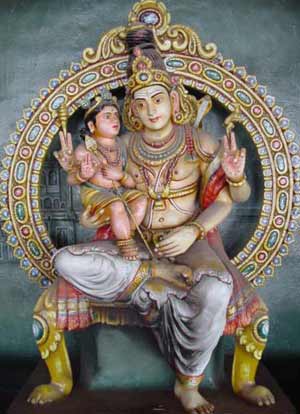
Gurunatha of SivaMurukan is known as Takappancami (Swami to his own father) and Swami Nathan (Swami to
Siva). Swamimalai one of the hill abodes of Murukan is named after an incident.
Brahma ignored Skanda when he went to Kailasa. To teach him a lesson, Murukan
asked him to give the meaning of Om or
Pranava mantra (Kantapuranam) which the former was unable to pronounce. So
the latter hit Brahma on the head and imprisoned him, not for his ignorance but
for his ego and pride. (Adi Sankara, Śrī Subrahmanya Bhujankam, Sloka 12). As
there was no creation, Siva himself interfered and requested him to tell him
the meaning of ‘Om'. Murukan asked
him to take the position of a disciple, he himself became the Guru and
pronounced the meaning. (Kumaraguruparar, Kandarkali Venba 90 –98). Hence he is
Swāmi Nāthan and Guru Nāthan and the hillock in which the incident is said to
have taken place is Swamimalai or Tiruverakam. (Arunagirinathar, Tiruppukal). Siva,
the omnipotent was submissive before his son. This denotes the simple fact that
even the powerful could submit before true knowledge and one should not be
judged by outer stature. Arunagirinathar goes one step further to denote that
Murukan himself is Pranava mantra and
it is a divine pleasure to be taught by him though he knows he and Murukan are
one and the same. (Kandaralankaram, v. 55 Kandaranuputi v. 36) Murukan, the
Jñānapandita (Tiruppukal 100) proves that humility is virtue, and knowledge
with vanity would definitely cause destruction.
Renouncer of DesireSage Narada is said to have taken a mango to Kailasa and caused a conflict between Ganesa and Muruka (Palani sthalapuranam). As the latter lost the deal, he left Kailasa renouncing all his riches and royalty and reached Tiru Avinankudi or Palani where he is depicted as a great renouncer. He stands with a single piece of dress, rudraksha, and a danda. (Tiruppugazh, 117). He is the Gnanapandita and he himself is the fruit of wisdom (gnanapazham). This incident clearly visualizes that pride and ego would lead to failure; and humility and forethought would lead to victory. Humble and obedient Ganesa is shown as the winner. The renouncement of anger is to be realized. Though it may look that Murukan created a big scene for a simple mango, the later action of Muruka in the form of Dandayudhapani proves that hasty and desirous thought and action may lead to renouncement. Lord of Tamil and Head of the Tamil CankamMurukan is known as Tamizh Katuvul (Lord of Tamil) and head of the second Cankam. He was a member of the first Tamil Cankam. Though Agastya was the head of the first Tamil Cankam, Murukan only taught Tamil to Agastya. This shows the greatness and divinity of the Tamil language itself. As scholars of excellence only were the members of the Tamil Cankam, the quality of the works was also good. Tamil language was always associated with Murukan. Embodiment of beauty and youthThe word Murukan denotes youth, fragrance, divinity and beauty; Kumaran also means youth. Beauty purifies heart, youth eliminates sickness or ill health; fragrance makes the environment enjoyable; and divine grace brings eternal pleasure and everlasting peace. (N.P. Shanmukam, Murukan Religion – Its Relevance to Modern Man, 1998, Chennai). He has the name Murukan, Azhakan, Kumaran to denote beauty and youth. Cankam literature have ample evidences to show these characteristics of Karttikeya. Great benefactor of His devoteesAgastyaMurukan, the graceful lord is a great benefactor. He shows his concern to his devotees starting from Agastya to an ordinary person of modern times, Murukan showered his grace to his devotes. Agastya, the great sage and head of the first Cankam is said to have been the disciple of Murukan who taught him Tamil when the former came from the north to the South (Arunagirinathar, Ceval Viruttam, ll 14 – 16). Murukan was a great preacher and teacher of Agastya (Tottikalai Subrahmanya Munivar - Tanikai Tiruviruttam). NakkīrarWhen Nakkirar and nine hundred and ninety nine poets were imprisoned and to be eaten by the ghost Karkimuki, Nakkirar sang Tirumurukarruppatai in praise of Murukan who came to his rescue by killing the ghost and releasing the thousand poets. But for the grace of Arumukam all the poets would have been killed by the ghost. CikantiIt is true to note that to a great devotee, God will help in any form. When sage Cikanti was in Kathirkāmam, a great Murukan center, a wild elephant came to attack him, but the fearless Murukan devotee plucked the top steam of the betel leaf and threw it on the direction of the elephant. It became the spear of Muruka and killed the elephant. The faith and devotion on Murukan had saved Cikanti from death.
MuchukuntarHe was a great devotee of Murukan and married the daughter of Veerabahu. Muchukuntar won over the asuras, for which he sought the idol of Somaskanda, worshipped by Indra. This shows the great devotion he had for both Siva and Murukan. Adi SankaraSankara, the pronouncer of Advaita was a great Saivite philosopher. Abhinava Gupta, an opponent of Sankara, caused him physical illness which troubled Sankara. Siva came in his dream and directed him to go to Jayantipuram (Tirucentur) and pray to Murukan. When he reached Jayantipuram and worshipped Skanda, he saw Adisesha worshipping at the feet of Muruka. Immediately he chanted the Shanmukha Bhujankam (the verses which go like snake in praise of Shanmukha). He was cured of his disease. It is believed that by chanting the Shanmukha Bhujankam and smearing the sacred ashes, anyone would be cured of any sickness. ArunagirinatharMurukan is benevolent even to bad people and turns them to be good. Arunagiri, who was an embodiment of vices realised his folly and attempted to commit suicide by jumping from the temple tower. Murukan saved him from death and sickness by giving him the sacred ash and later the Rosary (japamāla). (Tiruppugazh v. 106) Arunagiri visited all centers of Murukan and sang Tiruppugazh, and many more hymns. Earlier he was shown the sacred feet of Murukan at Swamimalai temple (Tiruppugazh v. 199). When the ruler of Tiruvannamalai, a great devotee of Kali, challenged him to show Murukan, the Lord appeared before all to save his devotee from capital punishment. Similarly when there was a verbal conflict between Arunagirinathar and Villiputturar (a Vaishnavite), the former sang Kantarantati for which the latter could not give the meaning. As a loser, Villiputturar attempted to tear off his own ear, but Arunagirinathar saved him from torture. This was because of the grace of Murukan. Again the ruler of Tiruvannamalai ordered Arunagiri to fetch a flower from the abode of the devas. Arunagiri transmigrated into the body of a parrot to do the same. But before he could return with the flower the ruler burnt the body of Arunagirinathar. Hence Arunagiri permanently found his place in the form of the parrot in the hand of Parvati. Arunagiri will be ever remembered by Murukan devotees for his wonderful compositions, which have rhythm and good meaning. Kacciappa SivachariyarHe was the author of Kantapuranam in Tamil. It is very interesting to note that Kanta himself gave the first line of Kantapuranam to his devotee. When it was released, one poet objected to it and Murukan himself appeared on the scene and nullified the objection. Sivachariyar remains popular till the present day because of his composition which was a result of his unquestionable devotion to Velan. KumaragurupararHe was dumb till he was five year old and his parents took him to Tirucentur and prayed to Arumukan. He gained speech and sang Kantarkali Venba and later visited many temples and sang many hymns. He founded a math at Varanasi and propagated Saivism. He imagined Murukan as child and sang Muttukumaraswami Pillai Tamizh. 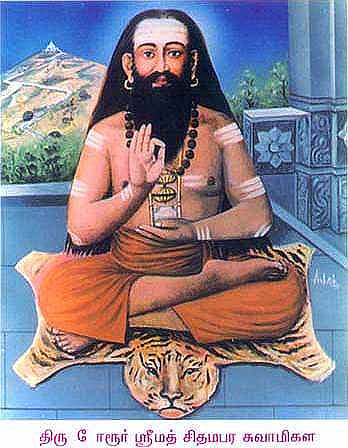
Tirupporur Citambara SwamikalTirupporur Citambara Swamikal wrote various hymns to show how Murukan takes the form of a loving mother to show his love and care for the needy children (Tirupporur Sannithi Murai). Tirupporur was rediscovered and renovated by Chidambara Swamigal who is said to be a descendant of one of the poets of the Tamil Sangam of Madurai. This place was then a forest of palmyra trees. Lord Murugan as Swayambhu Murti lay covered up by an anthill. Chidambara Swamigal is said to have discovered the image of Skanda in the anthill, and then rebuilt the temple and reinstalled the image. Subrahmanya MunivarHe was not only a great Tamil Scholar but a Murukan devotee too. He sang Tanikai Tiruviruttam in praise of Lord Murukan requesting him to give eyesight to another devotee and the Lord fulfilled his prayers. VallalarThe sage from Vatalur preached Samarasasanmarga and he got the grace of Arumukan in the form of Gnanadesika. His Tiruvarutpa (Fifth Tirumurai, Devamanimalai) gives a vivid description of his strong faith and devotion to Arumuka and how the surrender at the Lord's lotus feet would being ultimate results in this and next births. Devaraja SwamikalDevaraja, a staunch devotee of Murukan is a
great contributor to Murukan bhakti literature by authoring Kantasashti
Kavacam. His great suffering was ended by the grace of Skanda. So he expressed
Vallimalai SwamikalArthanari, the cook of Mysore Maharaja, had severe stomach pain and his devotion and surrender to Palani Andavar cured him completely. He became a disciple of Seshadri Swamikal of Tiruvannamalai who directed him to go Vallimalai. He propagated Skanda cult. Whenever he sang Tiruppugazh, the presence of Murukan was felt by him in the form of a peacock (Padmanabhan, p. 18). Pampan SwamikalAppavu, son of Sattappan and Cenkamalam, was
also known as Kumaragurudasan and Pampan Swamigal. He renounced his family and
became a great devotee of Murukan. In 1923 he met with an accident and
Muttuswami DikshitarThe great exponent of Karnatic music was fortunate enough to get the blessing of Murukan in the form of small boy in Tiruttani temple. Hence his composition end with Guruguha in reverence to Murukan (N. Padmanabhan, p. 225) GunasilarHe was a great Muruka devotee and poet. Prativati Bayankaran called him for a debate and Gunasilar prayed to Murukan for his grace. When the aggressive poet was unable to continue the poem started by himself, it was completed by a shepherd boy who introduced himself as an unfit disciple of Gunasilar. Bayankaran was afraid to have a debate with Gunasilar as he realized the standard of the guru of the shepherd and went away from that place. Gunasilar realised that Murukan came in the guise of shepherd and saved him (P. L. Muthukumaran, Murukan Arut Selvam, pp. 579 – 580, 1998, Chennai) PakazhikuttarThough a Vaishnavite, he was a staunch devotee of Murukan. When he had incurable stomach pain, he sang Tirucentur Murukan Pillai Tamizh and was relieved of his pain. As there was a regular conflict between the Saivites and Vaishnavites, he was not respected by the Saivites for his devotion to Murukan. But the Lord wanted to prove his faith to all. So he made his ruby pendant to take its place on the chest of Pakazhikuttar. When the temple authorities searched and found it with the devotee, they realized their folly and gave all honours to Pakazhikuttar. Chidambara MunivarDuring the middle of the seventeenth century, Chidambara Swamigal was a disciple of Sivagnanayogi of Kanchipuram. His sickness was cured by Arumukan (Kshetrakovai Pillai Tamizh). He sang many hymns in praise of Murukan. Promoter of different cultures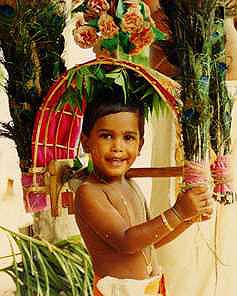
Murukan, the lord of the Kurinci region shows the tribal character. The people of the hilly regions could have taken Murukan as a divine power, relieving them from the dangers of wild beasts, and natural calamities. As they were hunters, they would have used spears for hunting and protecting themselves from dangers. Perhaps because of this, Vel or spear attained importance apart form being given by Sakti to Murukan to kill the aruras. The spear became the symbol of power and strength of not only Murukan but also the hunting class. Hunting class worship him on the hills. Cankam literature say much about Velan Veriyatal, a practice followed during the Cankam age. Spear becomes and inseparable weapon of the hunters as well as Velan. In Murukan temples devotees take Kavadi, and milk pot (palkutam) during festival days; some devotees pierce their body with small and big spears. As he is the god of beauty and youth, even young men and women participate in these rituals. Even in urban areas also the Skanda cult became very prominent and temples were built on artificial hills too. The images of Murukan, Valli and Devasena are made in a beautiful and sophisticated manner in urban temples and festivals and offerings are also made in a refined manner. People belonging to rich and royal communities show their interest in propagating this Skanda culture in a different manner. In the rural areas too, the devotees are worshipping Murukan and celebrate rituals and festivals. Redeemer of evil forcesWherever and whenever necessary, he shows his divinity and make the devotees or affected persons realize their folly and responsibilities. He took the form of human being to show his simple and approachable nature. Even in wooing Valli, he took the forms hunter and old man and at last he showed his divinity. He showed compassion to a wild ram, peacock and cock and brought them under his control. The wild ram became uncontrollable during the yāga performed by Narada. The affected devas pleaded to Murukan to save them. So the Lord sent Veerabahu who caught the ram and brought before Arumukan who controlled the audacious ram and made it his mount. Similarly when Surapadma took the form of a mango tree in the ocean, Subrahmanya threw the sakti vel and split the tree into two. The two parts turned to be a peacock and cock which Murukan made his Vahana and flag respectively. Respected even by MuslimsIt is interesting to note that some Muslims worshipped Murukan. Arunagirinathar calls him as Ravuthan in Kandaralankaram (V. Maraven 1.8) which may mean a great hero. Similarly Citambara Swamikal also says that including turukkar (Muslims), all other communities such as Konkanar, Ariyar, Uttiyar, Kosalar, Gurjaras, Sinkalar (Sri Lankans), Sonakar, Vankalar, Elar (Sri Lankan Tamils), Telunkar, Konkar, Ankar, Kalinkar, and Kannatikas accept Murukan as their Lord (N. Padmanabhan, p. 9). On reaching the top of the Tiruttani Hill, the eastern side of Car Street could be seen. It is very interesting to note that a Nawab by name Katar made a donation of a big vessel in which many kilos of camphor could be lit on Karttikai days and a mandapam to play daily the musical instruments of the Muslims. He is said to have built a Siva temple and named it Prasanna Katarisvaram to show his devotion to the Lord who cured him of his pain (ibid, p. 236). Both Muslims and Hindus worshipped Murukan in Tiruttani where the Lord appeared before Vallimalai Swamikal in the form of a fakir (ibid, p. 236). [Editor's note: Until very recently, the annual Tiruttani Padi Vizhā included guest performances by Muslim devotional singers. Katirkāmam in Sri Lanka also attracts hundreds of Muslim pilgrims annually.] Propagator of Indian artThe cult of Murukan has spread not only throughout India but also in far off countries West and East. There are temples for Karttikeya in Sri Lanka, Burma, Malaysia, Singapore, Mauritius, Indonesia, Philippines, Australia, New Zealand, African countries, USA, Canada, and UK where the migrated Hindus celebrate all rituals and pujas related to Murukan. Kavadi, the folk art of the Tamils play and important part in these rituals and festivals. During Taippucam, Krittikai, Vaikaci Vicakam and Pankuni Uttiram, all Murukan temples in India and abroad have a festive look and devotees offer worship in various forms. These festivals bring all communities closer to each other. Destroyer of Ignorance and Pride
Murukan, the Gnanapandita was the destroyer of ignorance and pride, as both the characteristics are interlinked pride leads to ignorance and vice versa. Avvaiyar, the most knowledgeable woman of the Cankam age, proved her ignorance in a very simple incident. Once when the learned lady was on her way to Madurai, she rested under a blackberry tree. The lord in a guise of a shepherd boy asked her whether she wanted a hot or cold fruit. When she wanted him to help her in getting fruits from the tree she answered that she wanted the latter. When the fruits fell on the ground, the lady took them and tried to puff off the sand on the fruits (a gesture usually done to reduces the heat of edibles). Then the boy asked her why she had chosen the hot fruit instead of cold. Then only Avvaiyar realized her ignorance and pride, and understood from the lord the meaning of her action. Her pride and ignorance vanished and she became simpler and more enlightened (Tiruppugazh 441). This incident could be correlated with the action of the Lord himself in his earlier days. When Siva asked his two sons Ganesa and Murukan to circumambulate the earth to get the mango brought by Narada, Murukan started on his peacock to perform the action. But the humble and wise Ganesa came round his parents, whom he valued as the universe, and got the fruit. Perhaps this made Muruka wiser and humbler. Similarly when Brahma came to Kailasa, he ignored little Murukan who questioned the Lord of creation the meaning of the Pranava mantra which the former failed to pronounce. Hence the latter imprisoned Brahma when Siva came for the release of Brahma, Murukan made him his disciple and taught him the meaning of Pranava mantra. The punishment to Brahma was not for his ignorance but for his ego. Though Siva is omnipotent, his humility to know the meaning shows his modest nature as well as the greatness of his son Murukan. In these ways Murukan delivers not only the gods but the human beings too from ignorance and pride. When Poyyamozhipulavar, a great devote of Siva, refused to sing on Murukan, stating that he would sing only on Siva not on his son, Murukan came in the guise of a hunter and made him realize his pride and folly and there was no difference between Siva and Murukan as they both are one and the same (Muthukumaran, p. 578). ConclusionThe cult of Murukan is deeply rooted in Indian soil and has even spread far in foreign regions. It not only attracts great crowd, but promotes integration, co-operation and co-ordination among the devotees. The literature on Murukan is very vast in character. Kantasashtikavacam, Shanmukavacam, Tiruppukal, Śrī Subramania Bhujankam, Kantaralankaram, Kantaramputi, Tirumurukarruppatai, Kantapuranam, Tanikaipuranam, Tirucenturpuranam, etc., and the sthalapuranas of various Murukan temples are well read by the devotees of Skanda. These are not only religious literature but also promote love, affection, sacrifice, fear for doing bad things, and ultimate result of actions performed by human beings. Murukan, a single god, takes various forms to show to the people the do's and don'ts of life. His birth itself is meaningful and he has served the purpose. He receives parental care, brotherly affection, royal and divine treatment; shows the significance of arranged and love marriage; shows the might as a great commander and redeemer; proves to be the guardian of justice, truth and reality; savior of the devotees and redeemer of the affected ones; personification of youth, beauty, valour, love, knowledge etc, benefactor of the devotees and above all he is the only Tamil Katavul. Sincere devotion to Murukan would yield fruitful results. Various facets of the Lord reveal different dimensions of him. He is immeasurable, and unfathomable but reachable by mere surrender and devotion. ReferencesPrimary Sources
Secondary Sources
|

